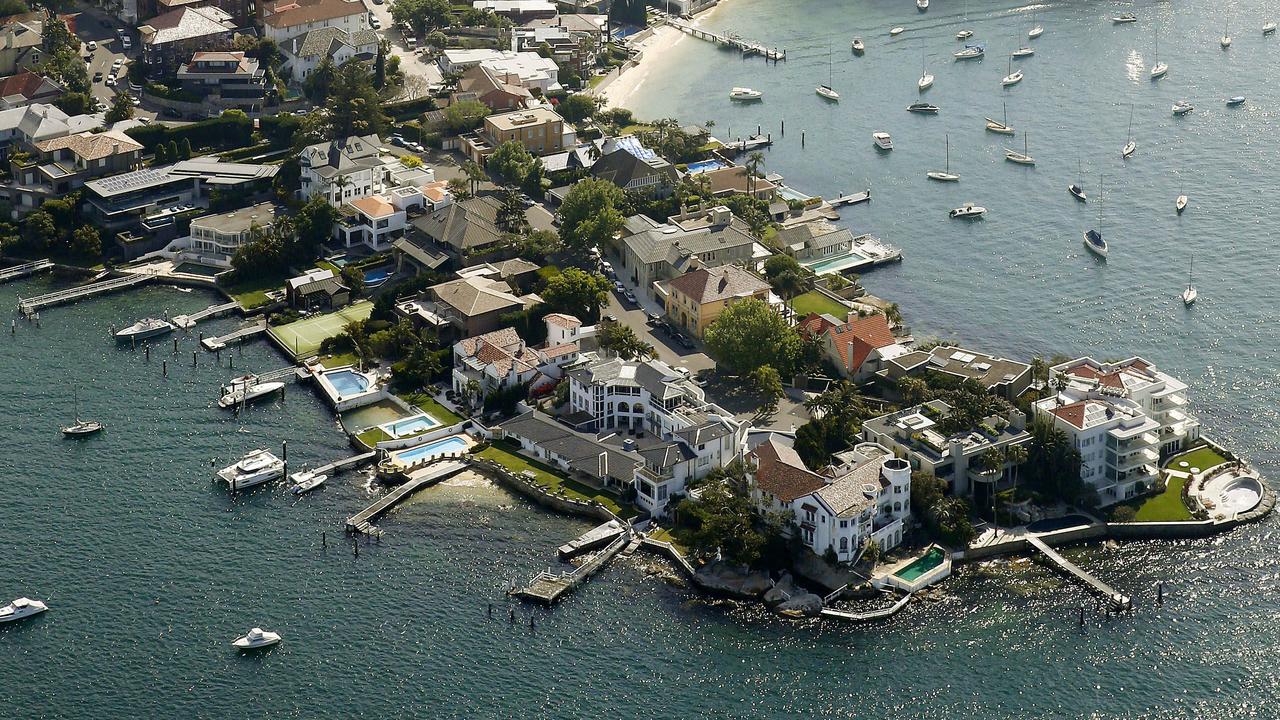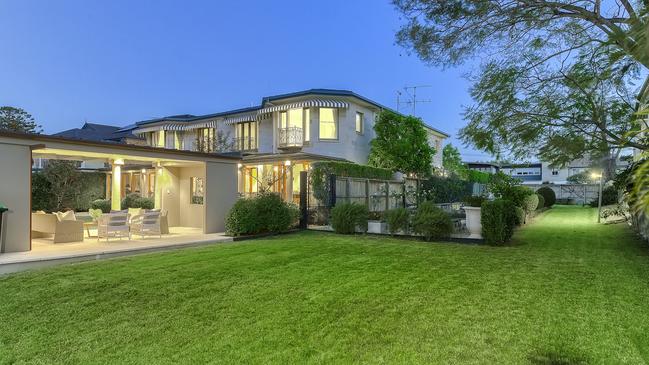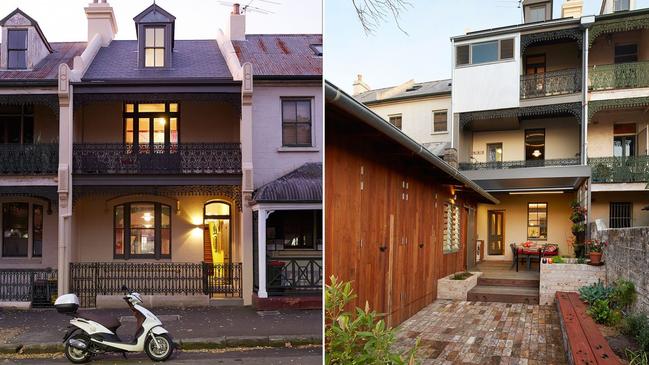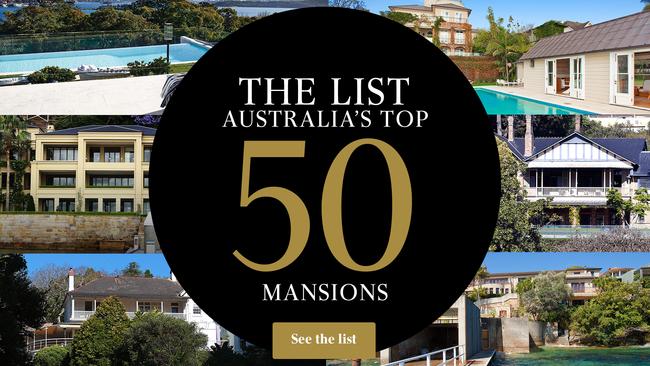Where the hidden rich Australians live
They aren’t wealthy enough to make The List of richest Australians but the moderately well-to-do are shaking up the property market | SUBURB GUIDE

The Weekend Australian published a list of the residential property holdings of the 100 wealthiest individuals in Australia. This is largely the work of John Stensholt, who for many years has tracked the wealth of Australia’s rich. What Stensholt showed is a clustering of the ultra-rich in places like Point Piper, Toorak, Dalkeith and Hedges Avenue.
But what is more relevant to the property industry is the depth and distribution of an upper-middle class with the capacity to buy what might be termed comfortable — even cutting-edge — residential property.
This is the just-below-the-radar market of the moderately well-to-do Australians who are not rich enough to attract the attention of the likes of John Stensholt, or gossip columnists, but who have the capacity to pursue a middle-class version of lifestyle property.
But where to find these modesty wealthy Hidden Australians? I think Australia’s rich are a bit like a thick soup that swirls outwards from the points and promenades that contain the wealthiest individuals Stensholt identified.
By my reckoning (and drawing on the census), just over 3 per cent of income-earners earn more than $150,000 a year, which is roughly double average earnings.
But this open-ended income bracket includes billionaires as well as sole-income wage earners supporting a dependent family. A better way to find what I think are the most delicious property-buying chunks from within a city’s rich soup is to express the number of high-income earners as a proportion of the suburb’s population.
Just over 2 per cent of all Australians fall within the census’s top income bracket, which today equates to half a million people. This proportion rises in places where there are more high-income earners relative to dependants (such as kids, students, non-working spouses and retirees), thus enabling a greater proportion of income to be allocated to property.
In Sydney, 25 per cent of Point Piper’s 1400 residents fall into the high-income category, while in Milsons Point, Millers Point and Longueville this proportion is 21 per cent. But in Dawes Point (Walsh Bay) this proportion reaches 31 per cent.

Sure, Point Piper’s pricey Wolseley Road might contain a line-up of Sydney’s ultra-rich, but discrete Dawes Point just west of the Harbour Bridge has a higher proportion of single (or working couple) corporate types in the uppermost income bracket.
From a property developer’s point of view, better to develop 200 apartments somewhere in the rich soup that spills along the harbourfront to Walsh Bay than a single mega mansion in Point Piper.
In Australia’s 100 Best Mansions, Stensholt argued that Toorak is home to the largest number (23) of Australia’s 250 ultra-rich individuals, eclipsing Sydney’s Point Piper. But this isn’t a fair comparison.
Melbourne’s Toorak Nation comprises 13,000 residents whereas tiny Point Piper has barely a tenth of that population. Point Piper reigns supreme as Australia’s very own billionaire-per-capita hotspot.
But ultimately, it’s Melbourne’s rich soup that I think offers the best prospects for property projects aimed at high-income earners. There’s a rich cluster around Toorak, and another around Albert Park and Middle Park, and yet another at Brighton.

Triangulated in the centre of these three rich pillars is the yet-to-be-fully gentrified cluster comprising Windsor, St Kilda, St Kilda East and Balaclava.
My logic is that (property) spending capacity radiates outwards from established well-to-do locations, where planning restrictions limit denser developments.
And in this regard the St Kilda-to-Windsor corridor is right now being subjected to a “radiated richness” on three fronts. It’s only a matter of time before high-income earners breach, conquer and colonise these wild and untamed St Kilda territories.
Sydney’s harbour edge doesn’t facilitate this “rich radiation effect”, except perhaps at Chatswood, which abuts the waterfront suburbs of Castle Cove and Castlecrag.
I get the impression that Brisbane’s high-income suburbs are up for grabs. It’s as if the owners of the grand Queenslanders of Hamilton and Ascot have downshifted to an apartment at trendy Teneriffe or jumped the river (and possibly the shark) to gentrified Bulimba.

The Brisbane CBD seems to be cultivating local versions of Sydney’s hipster favourite Surry Hills at New Farm, and corporate-meets-hipster favourite Barangaroo at West End. Whatever Sydney and Melbourne do, Brisbane will follow. Queens Wharf, for example, is an on-trend response to Barangaroo and Southbank.
And way out west, amid the quiet acreage of Pullenvale, there lies a community with five times the national average high-income earners relative to population. Can’t be too many kids, stay-at-home partners, uni students or retirees at Pullenvale. Perhaps there’s a market for wannabe downshifters in the west to exit their troublesome acreage and transition into a sleek chic riverside apartment?
The well-to-do in Perth follow an odd mixture of Sydney and Melbourne location principles when creating that city’s ritziest suburbs. Top spots go to Dalkeith, Mosman Park and Peppermint Grove overlooking the Swan River, and which is similar to the pull of Sydney’s harbour, but then a high-income offshoot sprawls west to Cottesloe and then spills north to Scarborough, which is similar to the way wealth spreads throughout Melbourne.

In Adelaide, the well-to-do cluster in North Adelaide and in nearby Medindie and College Park, although the city’s proportion of high-income earners peaks at 19 per cent of the population amid the genteel acreage of Springfield near Flinders University. Otherwise it’s the eastern suburbs that hold the largest collection of Adelaide’s highest-income earners.
In Hobart, it’s Battery Point, in Canberra its Forrest and Yarralumla, and in Darwin it’s Wickham and Howard Springs that contain the largest proportion of high-income earners.
Outside the capitals, Australia has several skewed high-income communities that are more or less devoid of dependants. On Barrow Island, off the coast from Dampier, Western Australia, the Gorgon gas project supports a local population of 2000 people — mostly workers — where close to half earn more than $150,000 a year. Queensland’s Curtis Island (LNG), Groote Eylandt’s Alyangula (manganese) and the Pilbara’s Mardie (magnetite) all have a greater proportion of high-income earners relative to population than does Toorak. I wonder whether there’s a pecking order, a type of Toorak, a FIFO version of Point Piper, in donga design? Does any donga come with a water view?

The richest Australians are urbanites; even high-income earners in regional Australia tend to be either FIFO workers (and actually based in big cities) or are so thin on the ground that they fail to make their presence known in any statistical review. And while there is a certain satisfaction in knowing something of the lifestyles of “the richest Australians”, the fact is this community is tiny, and in either case they generally prefer to live in areas unfavoured by planners for denser development. What I think is far more interesting to the property industry is the rich soup that binds and suspends the tiny chunks of the ultra-rich.
That soup in Melbourne is converging on the St Kilda-to-Windsor corridor. In Sydney it’s washing inland to Chatswood, in Brisbane it’s spilling off the Hamilton hill while in Perth its making its way up the northern beaches.
Finding development sites to offer lifestyle options to the moderately well-off Hidden Australians living somewhere in the high-income-earning soup is far easier, and I suspect is far more profitable, than delivering a single signature mega mansion to the Point Piper set.
Bernard Salt is managing director of The Demographics Group. Research by Hari Hara Priya Kannan.





To join the conversation, please log in. Don't have an account? Register
Join the conversation, you are commenting as Logout